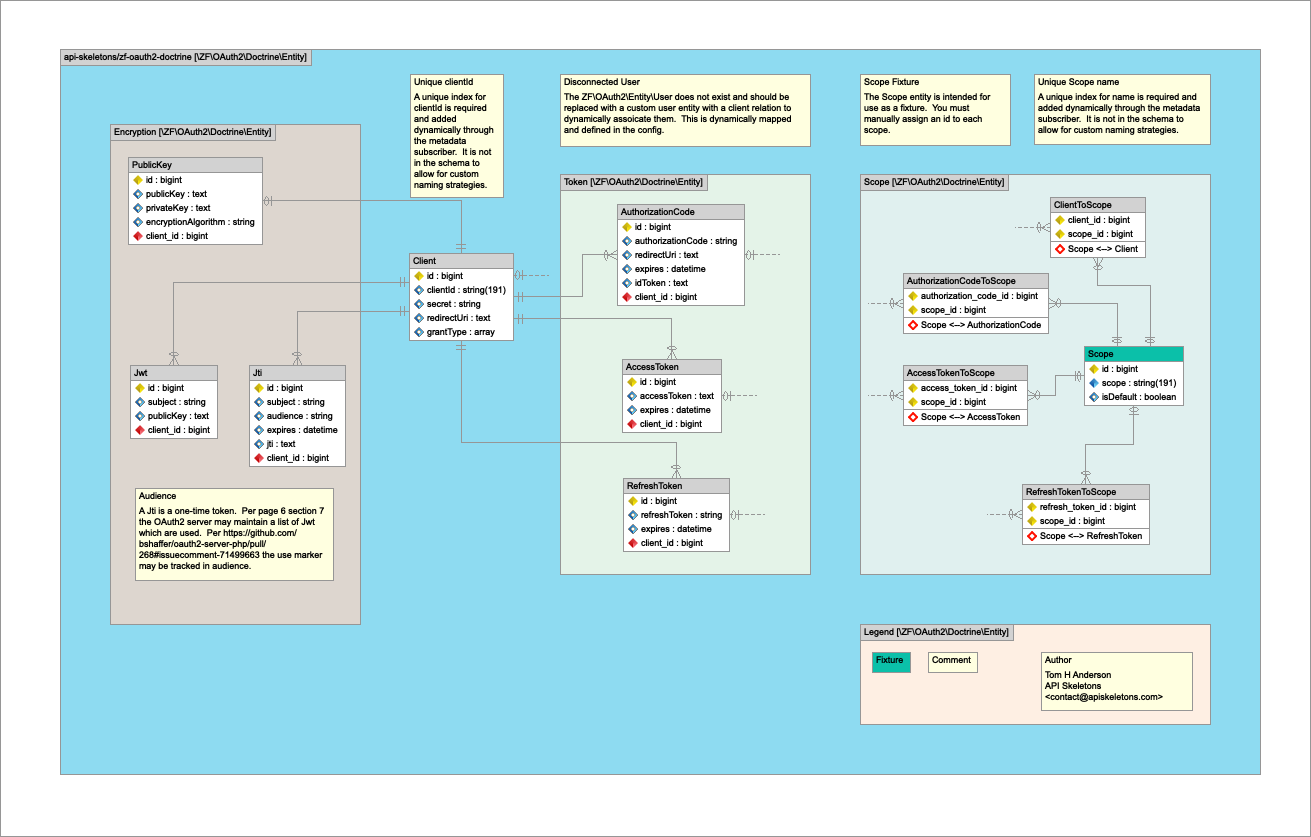A User has Clients. The Client table has a reference to User.
This allows one User to have multiple Clients; one per application which implements your API. This diagram may help but it uses a disconnected User so the relationships to User are not mapped.

Originally posted by @TomHAnderson at https://github.com/zfcampus/zf-apigility/issues/159#issuecomment-208066278
I've been playing around with Apigility, the framework does a great job. However, I've been trying to figure out how to implement OAuth2 in a mobile application.
After following the OAuth2 implementation guide, I'm now wondering how to create new clients. I have a workflow I think could work well in my mobile app:
I would be using the
Username and password access for Public Clients(based on the OAuth2 guide in Apigility's website).The issue here is how to create a new user in the OAuth2 client table, I was expecting a POST request to
mydomain.com/oauth/clientsbut of course that doesn't work.Whats the right workflow to achieve this in Apigility?
Originally posted by @manuelro at https://github.com/zfcampus/zf-apigility/issues/159